| Welcome |
|
May 15, 2019
Game of Life
Hi ,
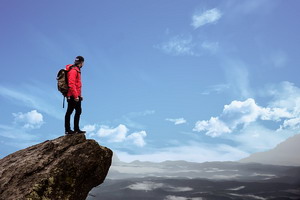 Life is an interesting adventure. Usually we don’t look at it as an adventure. Adventures are for super heroes and special people in books and movies. Adventures involve excitement and risk taking. And at least in the books and movies the fate of the world hangs in the balance. But if we take out
the fate of the world level of drama, our lives are adventures. We exist to connect and create, and both of these involve high amounts of risk. We have no idea how things will turn out when we try to make a connection or engage in a creative process. We are dealing with the unknown. How will things turn out?
We just don’t know. Life is an interesting adventure. Usually we don’t look at it as an adventure. Adventures are for super heroes and special people in books and movies. Adventures involve excitement and risk taking. And at least in the books and movies the fate of the world hangs in the balance. But if we take out
the fate of the world level of drama, our lives are adventures. We exist to connect and create, and both of these involve high amounts of risk. We have no idea how things will turn out when we try to make a connection or engage in a creative process. We are dealing with the unknown. How will things turn out?
We just don’t know.
We could look at the whole experience as though it were one big game. The problem is we weren’t told the rules. We don’t even know how to tell if we are winning the game. I suppose in older, simpler times the rules were told to us by our wise elders. Life was pretty basic, so winning was also pretty obvious:
day to day survival, finding enough to eat, maybe even successfully reproducing yourself through a child. But things are very complex now, and no one listens to the elders any more. Besides, most of them have some level of cognitive impairment anyway. We are stuck trying to figure it out all on our own.

What is the game of life? What are the rules? What constitutes a win these days? These questions used to be the stuff philosophers would argue about. They still do, but where in the past there might be two or three differing viewpoints you got to choose from, now there are thousands. Philosophers are a
dime-a-dozen. They come in all shapes and sizes. They make their living telling their supporters what they want to hear, so they will buy their books and like them on YouTube. Some of their stories are pretty fanciful, but since there is no measure of reality with which to assess these stories, we have no way of deciding which story is the best. We end up choosing the story that supports our agendas the best.
What does life itself tell us about the game? Looking at the game board and the pieces of the game can give us clues about how to play. Looking at the structure of the human brain and nervous system tells us a lot about how we are designed to function in life. The brain stem, the oldest part of the brain found in
all creatures, contains the wiring for basic survival. We need to feed, sleep, fight or run away from danger, withdraw or appear to be dead when captured by predators, and seek reproduction. So these functions must be a part of the game of life, as they are wired into us from birth.

The next oldest portion of the brain, the cerebellum, found in more evolved creatures like mammals, contains wiring for emotion and social connection. This area of the brain developed because forming social networks and expressing emotion greatly enhanced the survival of the mammals. By working together mammals could defeat predators and gain the upper edge in life’s struggles. This
says cooperative social connection is a key part of the game of life.
The most modern portion of the brain is the cerebrum. This is where thinking and creative problem solving happens. Humans have the largest cerebrums leading us to the conclusion that creative problem solving is a fundamental part of the game of life for humans. Large portions of the cerebrum are dedicated to controlling the hands, as our hands are the primary instruments with which we interact with the world. Other huge portions are dedicated to our mouth and lips for speech production, the other major way we participate with the world.

So just by looking at the structure of what we are as human beings physically, we can see that we are designed to tackle the challenge of surviving and reproducing through creative problem solving and the formation of cooperative social networks. We have language abilities and manual dexterity with which to create and connect.
Without resorting to philosophy or wishful thinking, we have discerned two of the key objectives of participating with the game of life – to create and to connect in order to enhance our mutual survival.
This may seem really simplistic and obvious, but how many people live their lives with this basic core purpose to life as their prime motivation? Humans survived to reach the top of the food chain through the tremendous skills of mutual participation in order to meet mutual needs. Mutuality is the fundamental cornerstone to human
survival. Mutuality means each of us uses our own unique problem solving abilities and creativity to generate survival solutions, which we then contribute to the larger community in exchange for other’s creative survival solutions being available for us to use. We all enhance each other and support each other. Our
value to our community lies in our creative service, and we are supported in exchange for that service. This 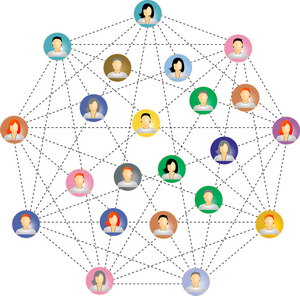 applies to our family, our peers, and to our society. applies to our family, our peers, and to our society.
This looks like a win to me. Winning the game of life appears to me to involve creatively developing skills or solutions that serve the needs of others and offering them in a balanced exchange for getting our own needs met. There may be lots of other wins in life, but this one looks to be pretty basic. Our brain
is wired for this type of interaction. The structure of our body supports this type of interaction. I think this may be part of the rules of the game.
Another “rule” we are able to discern has to do with conservation of energy and resources. In most life situations, resources are limited. As much as we  might like to wish it, there is no such thing as a genie
in a lamp that will supply us with unlimited resources. This is fundamental to the principle of equal exchange. Since everyone lives under the reality of limited resources, for exchanges to be sustainable long term, they must be equal. If one person always gets the “better deal,” then eventually the other person will be depleted and exchange will end. Yet everyone wants to be the one that gets more than everyone else. This is unsustainable and a failure approach to life.
Somehow people think beating everyone else and getting all the goods for yourself makes you the winner. In truth this can’t work, so everyone simply stops participating with you and you are left to try to
survive alone. Historically kings and the like got around this by giving away a lot of their gains to those that would be loyal to them, essentially paying for friends to play with. might like to wish it, there is no such thing as a genie
in a lamp that will supply us with unlimited resources. This is fundamental to the principle of equal exchange. Since everyone lives under the reality of limited resources, for exchanges to be sustainable long term, they must be equal. If one person always gets the “better deal,” then eventually the other person will be depleted and exchange will end. Yet everyone wants to be the one that gets more than everyone else. This is unsustainable and a failure approach to life.
Somehow people think beating everyone else and getting all the goods for yourself makes you the winner. In truth this can’t work, so everyone simply stops participating with you and you are left to try to
survive alone. Historically kings and the like got around this by giving away a lot of their gains to those that would be loyal to them, essentially paying for friends to play with.
A big pattern we are encountering these days is there are a lot of people who believe they should be supported without having to participate or contribute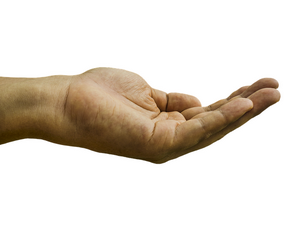 anything. This is just like the failure approach mentioned above in that it is unsustainable
for the same reasons. There is no genie with unlimited resources to keep this illusion going. These people invent fairy tales about government or big business having unlimited resources. They believe they are special simply because they exist and they should get those resources without any valuable exchange. This is a necessary fairy tale for parents with children under age 7, because truthfully children that young don’t have much value to contribute other than cuteness.
If we didn’t support this dependency for some period of time, humans would die out pretty quickly. The problem is we keep lengthening the dependency period until the children become adults and now have no skills for generating any useful exchanges with life. More troubling, they have no desire to develop useful participation with life. They have been coddled into becoming failures at the game of life. But the fairy tale story is that they are really the
winners because they are all little royalty that deserve to be taken care of for life. Only invalids need to be taken care of. anything. This is just like the failure approach mentioned above in that it is unsustainable
for the same reasons. There is no genie with unlimited resources to keep this illusion going. These people invent fairy tales about government or big business having unlimited resources. They believe they are special simply because they exist and they should get those resources without any valuable exchange. This is a necessary fairy tale for parents with children under age 7, because truthfully children that young don’t have much value to contribute other than cuteness.
If we didn’t support this dependency for some period of time, humans would die out pretty quickly. The problem is we keep lengthening the dependency period until the children become adults and now have no skills for generating any useful exchanges with life. More troubling, they have no desire to develop useful participation with life. They have been coddled into becoming failures at the game of life. But the fairy tale story is that they are really the
winners because they are all little royalty that deserve to be taken care of for life. Only invalids need to be taken care of.
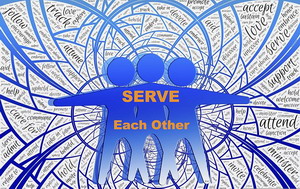
So the adventure of the Game of Life is not really as mysterious as we initially thought. Our very bodies and brains tell us the most basic rules to the game. Survival in a world of limited resources with many forms of competition teaches us more about the rules.
While there are many ways to take short cuts to acquiring our survival needs, there are very few that will work long term. Life is all about the long term. Creative problem solving and mutuality based communal participation are two of the most basic strategies that work in the long run. Are you learning these so you
can be a winner at life?
Take care,
David
Ellen update: 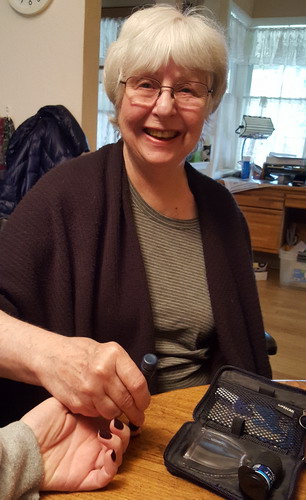
What's this? A new occupation for Ellen? She is helping a client check their morning fasting blood sugar. I think she likes taking blood!
|
| |
| |
| |
Walnuts for brain health In rat studies the consumption of walnuts has been found to significantly reduce brain inflammation resulting in improved learning skill, memory, motor development, and reduced anxiety. The amount of walnut eaten was equal to 1 to 1 1/2 ounces a day for humans.
In rat studies the consumption of walnuts has been found to significantly reduce brain inflammation resulting in improved learning skill, memory, motor development, and reduced anxiety. The amount of walnut eaten was equal to 1 to 1 1/2 ounces a day for humans.
Walnuts
_____________________________________________
"Life opens up opportunities to you, and you either take them or you stay afraid of taking them."
~ Jim Carrey
__________________________________
4 beers a day stunts brain growth 47%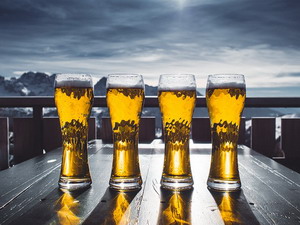 The average brain grows until about age 25. But specific quantified research has demonstrated that the equivalent of 4 beers a day is enough to stunt brain growth by 47% annually. All that college drinking is really a bad idea. From this age onward your brain looses around 50,000 brain cells a day, so you can't really afford to miss out on any of your potential brain growth.
The average brain grows until about age 25. But specific quantified research has demonstrated that the equivalent of 4 beers a day is enough to stunt brain growth by 47% annually. All that college drinking is really a bad idea. From this age onward your brain looses around 50,000 brain cells a day, so you can't really afford to miss out on any of your potential brain growth.
Beer Brain
________________________
"People need motivation to do anything. I don't think human beings learn anything without desperation."
~ Jim Carrey
_________________________________________________
Drug abuse higher among doctors than the general public 15.4% of doctors report abusing drugs and alcohol compared to 12.9% of the general population. The most commonly abused drugs are alcohol, pain killers like opiates, and stimulants like cocaine. What is the excuse? work stress is the most often reported reason for this abuse. Most states allow doctors to continue practicing while in a treatment program.
15.4% of doctors report abusing drugs and alcohol compared to 12.9% of the general population. The most commonly abused drugs are alcohol, pain killers like opiates, and stimulants like cocaine. What is the excuse? work stress is the most often reported reason for this abuse. Most states allow doctors to continue practicing while in a treatment program.
Doctor drug abuse
_________________________________________
"Behind every great man is a woman rolling her eyes."
~ Jim Carrey
_____________________________
Our address is 9725 Fair Oaks Blvd. suite A
Our hours are M - F 10 to 3:30
Finding the new location is very easy. Coming from highway 50 up Sunrise Blvd, you turn left and go up a block. We are on the right hand side - the building just past the Subway Sandwich shop. If you are coming down Sunrise from the Mall area then just turn right on Fair Oaks Blvd and up a block on the right.
If you are coming from the Roseville area you could come down Sunrise Blvd, but that is a long trek. It is probably shorter time wise to come down Auburn Blvd - San Juan Ave like you have been for the Sunset office, but instead of turning left at Sunset, keep going straight 3 more lights to Fair Oaks Blvd and turn left. Go down 2 lights to New York Ave, go through the intersection, and immediately turn into the turn lane once the center
divider ends. We are on the left.
You are free to reprint this article in your newsletter as long as you include the following statement in the same size type and color:
"This article appears courtesy of Fair Oaks Health News, offering natural and healthy solutions for body, mind and soul. For a complimentary subscription,
visit http://www.fairoakshealth.com"
Referral doctor for when we are out of town: Jennifer Webb DC
Jennifer Webb DC
6216 Main St. suite C1
Orangevale
988-3441
|
| |
|
|
|
_______________
to check on old newsletters
_______________
About Dr. DeLapp
|
Dr. DeLapp has been a philosopher, non-force Chiropractor, medical intuitive, and health innovator for over 35 years. He began experimenting with medical intuition in 1972 while studying physics at UC Davis. In addition to physics he designed and completed an individual major in the philosophy and psychology of education. Shortly after he choose to pursue a career in the only
truly health oriented profession available at that time, Chiropractic. He graduated with honors in 1981 with his doctorate and opened a private practice.
Since that time he has continued his research into the effects of consciousness and learning on health.
He developed the Biomagnetic Retraining system for correcting movement abnormalities.
Since 1991 he has focused on developing a powerful system for uncovering and assisting the mind-body connection in health and personal growth. The in-depth coaching, guided by the subconscious direction from the body, is called Heartflow. It is available at Fair Oaks Health.
Fair Oaks Healing
& Arts Center
Staff
 Dr David DeLapp DC
Dr David DeLapp DC
Chiropractor
Ellen Flowers FGM
Spiritual Life CoachEnergetic Nutritionist
Health Care Coordinator
Susan Richardson
Office Manager
Front Desk
Sherry Herrera
Front Desk Person
Susan McDonald
Catherine Cummings
New Products
Purity Oil Spray
Pain Relief
Essentials
CBDs plus 9 essential oils
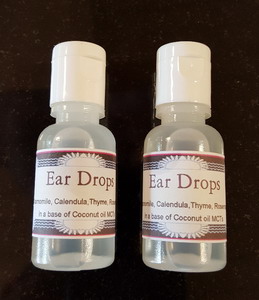
Ear Drops
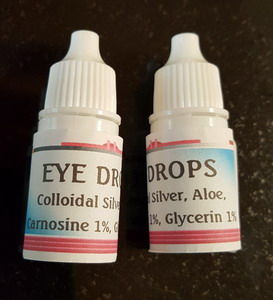
Eye Drops

Super Concentrated
Fish oil
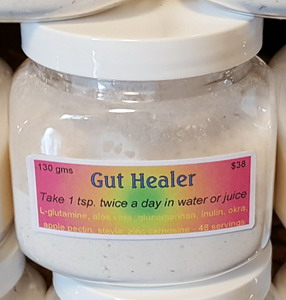
Gut Healer

Sinus Rinse
Powder

Balanced Salt
|
|

